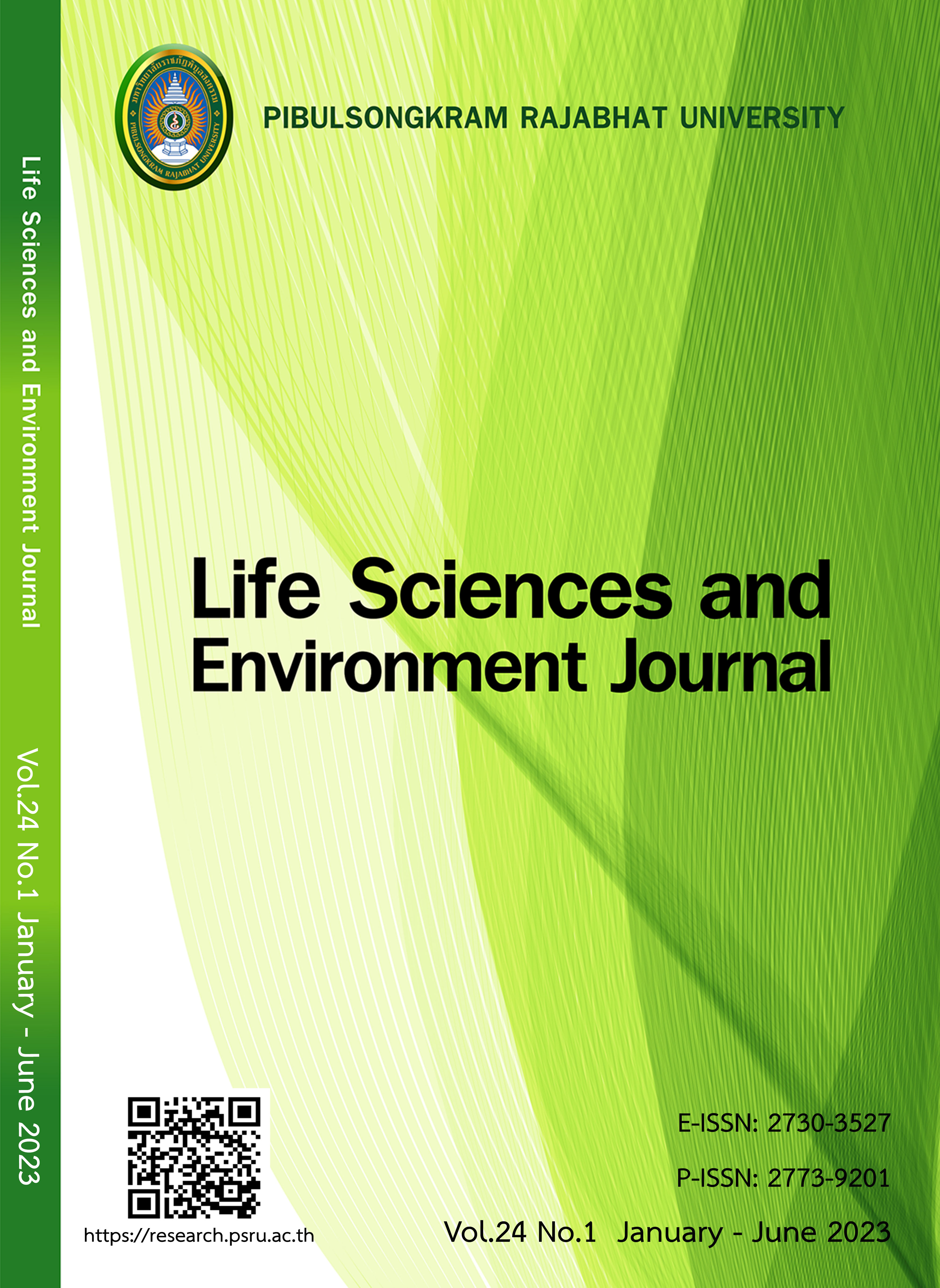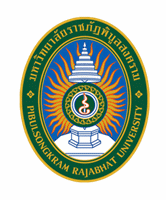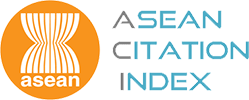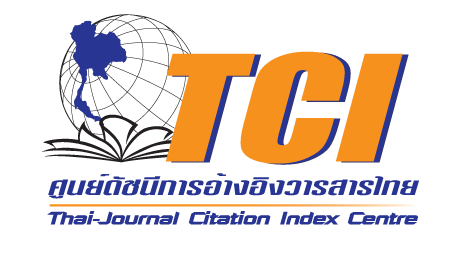พืชสมุนไพรโดยหมอยาพื้นบ้านชาติพันธุ์ไทลาว ในอําเภอชานุมาน จังหวัดอํานาจเจริญ
DOI:
https://doi.org/10.14456/lsej.2023.16คำสำคัญ:
พฤกษศาสตร์พื้นบ้าน , หมอยาพื้นบ้าน , ภูมิปัญญาพื้นบ้านด้านการรักษาโรคบทคัดย่อ
การศึกษาครั้งนี้มีวัตถุประสงค์เพื่อศึกษาความหลากชนิดและองค์ความรู้ของการใช้ประโยชน์จากพืชสมุนไพรของหมอยาพื้นบ้านชาติพันธุ์ไทลาวในอำเภอชานุมาน จังหวัดอำนาจเจริญ ระหว่างเดือนตุลาคม 2563 ถึงเดือนกันยายน 2564 โดยสัมภาษณ์หมอยาพื้นบ้าน 5 คน ทำการคัดเลือกแบบเฉพาะเจาะจง (purposive sampling ) และใช้แบบสัมภาษณ์แบบกึ่งโครงสร้าง (semi-structured interview) ผลการศึกษาพบพืชสมุนไพร 74 ชนิด 67 สกุล 38 วงศ์ พบมากที่สุดในวงศ์ Fabaceae จำนวน 10 ชนิด (14%) รองลงมาคือวงศ์ Rubiaceae จำนวน 7 ชนิด (9%) มีการใช้พืชสมุนไพร
ในการรักษาโรคทั้งหมด 22 โรค/กลุ่มอาการ โดยพบว่าการใช้พืชในการรักษาแผลมีค่าความสอดคล้องขององค์ความรู้มากที่สุด (ICF เท่ากับ 1) รองลงมาเป็นโรคเบาหวานและโรคริดสีดวงทวาร มีค่า ICF เท่ากันคือ 0.66 ชนิดพืชสมุนไพรที่มีค่าดัชนีรายงานการใช้ (UV) มากที่สุด คือย่านางแดง (Lysiphyllum strychnifolium (Craib) A.Schmitz) มีค่า UV เท่ากับ 1 รองลงมาเป็นบอระเพ็ด (Tinospora crispa (L.) Hook.f. & Thomson) UV เท่ากับ 0.8 ส่วนของพืชสมุนไพรที่นิยมนำมาใช้ในการรักษาโรคมากที่สุด คือ ราก จำนวน 39 ชนิด (52%) รองลงมาคือใบ จำนวน 23 ชนิด (31%) วิธีการใช้พืชสมุนไพรรักษาโรคมีทั้งหมด 8 วิธี ที่นิยมมากที่สุดคือ ต้มดื่ม จำนวน 57 ชนิด (77%) แหล่งที่มาของพืชสมุนไพรพบว่ามาจากสวนหลังบ้านมากที่สุด จำนวน 50 ชนิด (67%) รองลงมาคือป่าชุมชน จำนวน 33 ชนิด (44%) ลักษณะวิสัยของพืชสมุนไพรพบมากที่สุด คือ ไม้พุ่ม จำนวน 33 ชนิด (44%) รองลงมาคือไม้ต้น จำนวน 18 ชนิด (24%) ผลการศึกษาครั้งนี้แสดงให้เห็นถึงภูมิปัญญาพื้นบ้านในการใช้พืชสมุนไพรที่หลากหลายของหมอยาพื้นบ้านชาติพันธุไทลาวที่ยังคงมีอยู่ในปัจจุบัน แต่อย่างไรก็ตามปัจจุบันหมอยาพื้นบ้านส่วนใหญ่เป็นผู้สูงอายุ และมีจำนวนลดลงเนื่องจากไม่มีผู้สืบทอด ส่งผลให้องค์ความรู้เหล่านี้อาจจะสูญหายไปในที่สุด ภาครัฐควรเข้ามาส่งเสริมองค์ความรู้เหล่านี้ให้เป็นที่ยอมรับในทุกภาคส่วน เพื่ออนุรักษ์และป้องกันการเสื่อมสลายขององค์ความรู้เหล่านี้
เอกสารอ้างอิง
Ashraf MU, Muhammad G, Hussain MA, Bukhari SNA. Cydonia oblonga M. A medicinal plant rich in phytonutrients for pharmaceuticals. Front Pharmacol 2016;(7):163.
Bunloet A, Premgamone A, Kessomboon P. Prevalence and associated factors of I-Sarn syndrome among the diabetic patients and hypertensive patients in rural communities, Public Health Region 7, Thailand. Srinagarind Medical Journal 2018;33(2):122-128.
Cheentam S, Attisilwet J. Takolpuckdee P. Local wisdom of herbal medicines utilization in Bongoen
subdistrict community, Lat Lum Kaew district, Pathum Thani. Journal of Graduate Studies Valaya Alongkorn Rajabhat University 2019;13(3):137-148.
Cheentam S, Attisilwet J, Takolpuckdee P. Study of the diversity of species, medicinal plants and local wisdom using processes. Participation of Ban Dong Bang community Dong Keelek subdistrict. Journal of Thai Interdisciplinary Research 2015;10(3):1-8.
Chuntum K, Kamlungluea K. Treatment with herbs and the ancient recipe of traditional medicine. Journal of Medicine and Health Sciences 2017;24(2):48-57.
Cook FEM. Economic botany data collection standard. Royal Botaniv Garden Kew: Biodiversity Information Standards (TDWG); 1995.
Forestry Department. Thai plant names. Revised editions. Bangkok; National Office of Buddhism Printing; 2014.
Inta A, Shengji P, Balslev H, Wangpakapattanawong P, Trisonthi C. A comparative study on medicinal plants used in Akha’s traditional medicine in China and Thailand, cultural coherence or ecological divergence? Journal of Ethnopharmacology 2008;116:508-517.
Janket R, Petrakad P, Chankitiwat W. The situation of traditional medicine healers in the region in Thailand. Situation report: Traditional Thai medicine folk and alternative medicine, 2007-2009. Academic office of the department of development of traditional and alternative medicine. Bangkok; 2010.
Junsongduang A, Balsev H, Inta A, Jampeethong A, Wangpakapattanawong, P. Karen and Lawa medicinal plant use: Uniformity or ethnic divergence?. Journal of Ethnopharmacology 2014;151:517-527.
Junsongduang A, Kasemwan W, Lumjoomjung S, Sabprachai W, Tanming W, Balslev H. Ethnomedicinal Knowledge of Traditional Healers in Roi Et, Thailand. Plants 2020;9(9):1177.
Keyes CF. Isan: Regionalism in Northeastern Thailand. Ithaca, N.Y. Department of Asian Studies, Cornell University; 1967.
Kraithep S, Matrakool B, Thunyaharn S, Yingsiwaphat V. Antioxidant and antimicrobial activity of Bauhinia strychnifolia Craib Stem extract against oral pathogens. Royal Thai Army Medical Journal 2017;70(2):73-79.
Kitpreedapikul K. Methodology for social science research. Limchareonpol printing, Bangkok; 1997.
Lertviriyachit B. Wisdom folk healers and herb community in North East (Report). Suan Sunandha Rajabhat University; 2011.
Luckanawanich S. Promoting gender equality in higher education. Executive Journal 2011:31(2);55-62.
Maneenoon K, Chatawatee B, Damkhong C, Khiankhan N, Kunworarath N. Knowledge of Traditional
Healers on Utilization of Medicinal Plants Used for Menstrual Disorders in Krabi and Songkhla Provinces, Thailand. Burapha Science Journal 2017; 22(3): 243-258.
Mahakot S, Panumket S, Sungthong B, Prakaihan V, Pongpirut K. Folk wisdom, the use of herbs to treat oral eczema: a case study of Kalasin Province (Proceeding). Division of Alternative Medicine Department of Traditional and Alternative Medicine 2018:104-112.
Panyaphu K, Van On T, Sirisa-Ard P, Srisa-Nga P, Chansakaow S, Nathakarnkitkul S. Medicinal plants of the Mien (Yao) in Northern Thailand and their potential value in the primary healthcare of postpartum women. Journal of Ethnopharmacology 2011;135:226-237.
Pholhiamhan R, Saeunsouk S, Saeunsouk P. Ethnobotany of Phu Thai ethnic group in Nakhon Phanom province, Thailand. Walailak Journal of Science and Technology 2018;15:679-699.
Phumthum M, Srithi K, Inta A, Junsongduang A, Tangjitman K, Pongamornkul W, Trisonthi C, Balslev H. Ethnomedicinal plant diversity in Thailand. Journal of Ethnopharmacology 2018;214:90-98.
Phillips O, Gentry AH, Reynel C, Wilkin P, Galvez-Durand BC. Quantitative Ethnobotany and Amazonian Conservation. Conservation Biology 1994;8(1):225-248.
Picheansoonthon C, Kayormdock W, Chantachon S, Chokevivat V. 2007. Traditional medical knowledge
of the Phu Tai ethnic group in Northeastern Thailand: Part 1 Methodology and Samples of Healers. Journal of Thai Traditional & Alternative Medicine 2007;5(2):173-180.
Sumangkaset A, Nantasri C. Knowledge of the wisdom of folk medicine healers: case study in Namon district, Kalasin province. Journal of Library Association Research 2019;9(2):87-104.
Thongkamkaew S, Yume P, Sihanat A. Survey of medicinal plants and their uses in Ban Krang Subdistrict, Muang District, Phitsanulok Province (Research Report). Faculty of Science and Technology, Phibulsongkram Rajabhat University; 2017.
Triped J, Pattra S, Mahamit W. Study of flok wisdom wage of local herbal plants along the ecological environment of Phrom River, Chaiyaphum Province. Journal of Local Governance and Innovation 2021;5(1):213-224.
Trotter RT, Logan MH. Informant consensus: A new approach for identifying potentially effective médicinal plants. Ed. Bedfore Hills, New York; 1986: 91-112.
Wanset S., Onchomchant D. A study of medicinal plants utilization of folk healers: A case study of
folk healers in Chiang Rai Province Thailand. Journal of Traditional and Alternative Medicine 2018;16(3):420-435.
Wattanapijayakul A. Healing culture, Isaan folk medicine wisdom series, Folk Wisdom in Health 4; 2005.
Wisetvohan S. The study of medicinal plants of folk healers of the Tai Lao and Phu Tai ethnic groups In Kalasin Province (Research Report). Department of Science and Technology Faculty of Arts and Sciences Roi Et Rajabhat University; 2017.
ดาวน์โหลด
เผยแพร่แล้ว
รูปแบบการอ้างอิง
ฉบับ
ประเภทบทความ
สัญญาอนุญาต
ลิขสิทธิ์ (c) 2023 Life Sciences and Environment Journal

อนุญาตภายใต้เงื่อนไข Creative Commons Attribution-NonCommercial-NoDerivatives 4.0 International License.
Each article is copyrighted © by its author(s) and is published under license from the author(s).










